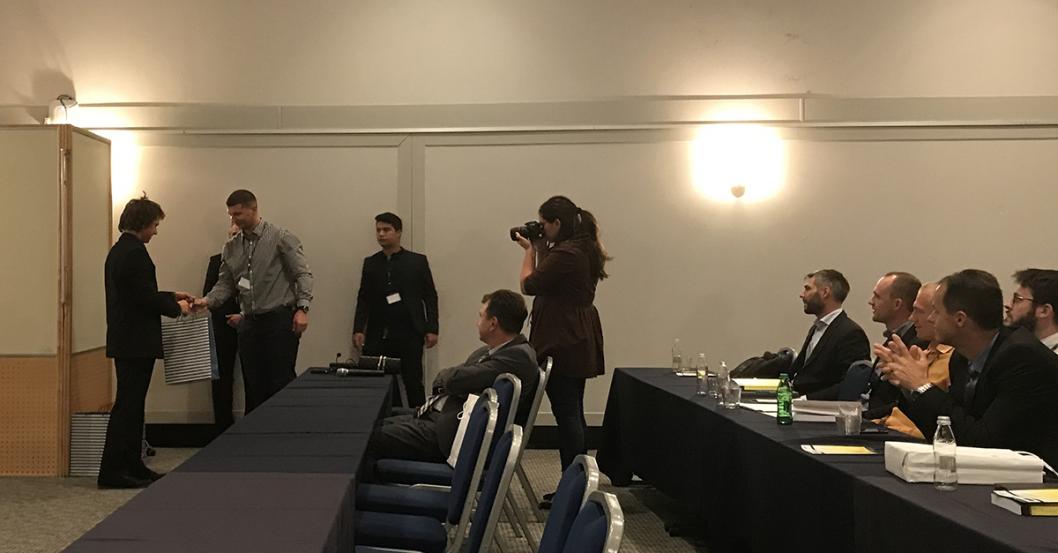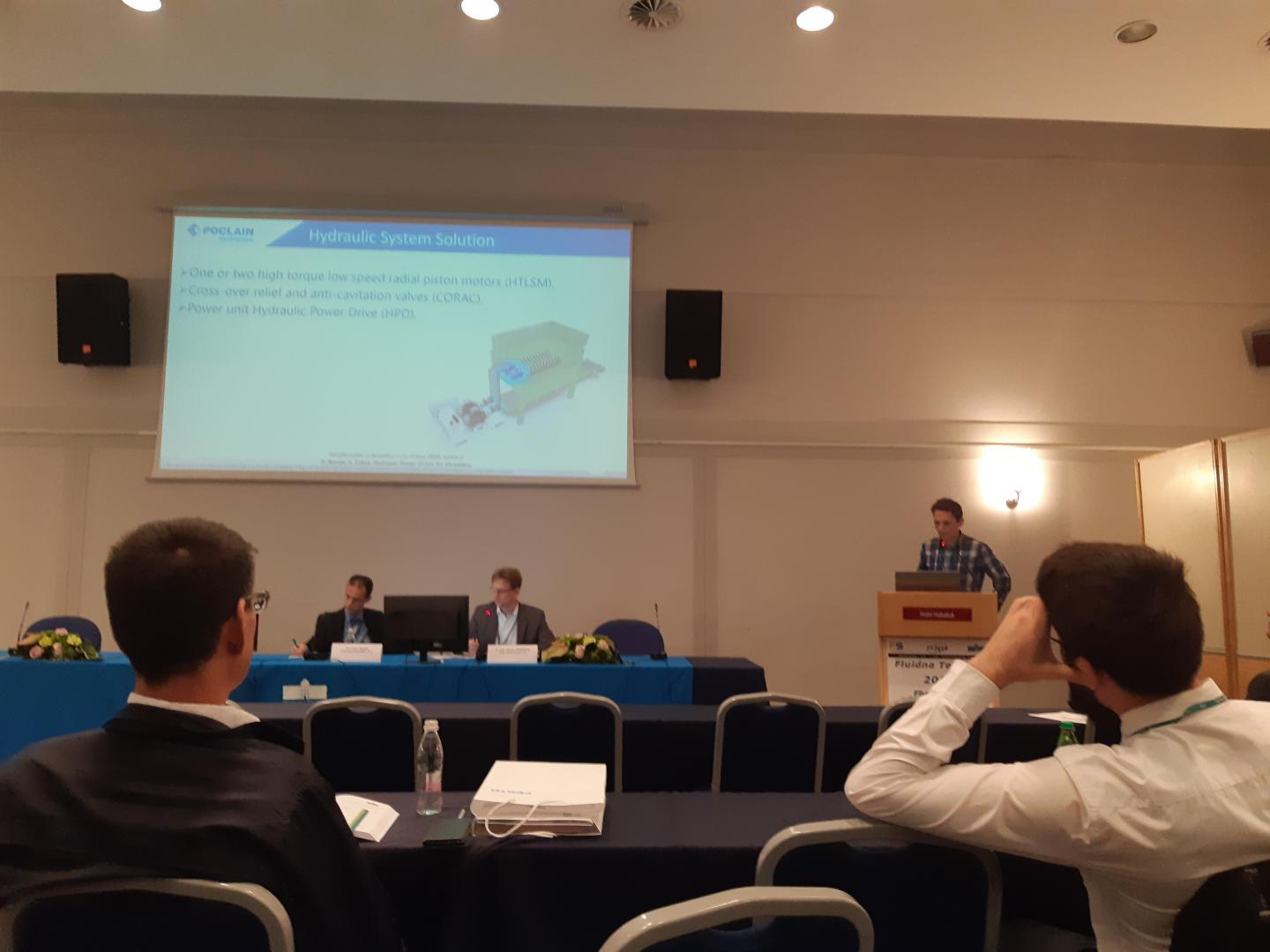POCLAIN HYDRAULICS SPONSORS FLUID POWER 2019 CONFERENCE
The international conference serves as a venue to discuss and introduce new products, achievements, industry best practices and research amongst hydraulics industry professionals, industry associations and researchers.
Representatives from both our Žiri, Slovenia and Verberie, France recently attended and presented at both in the areas of research and product advancements.
Topics included:
- Evaluation of flow-induced forces in hydraulic valves – a presentation of both experimental and numerical approaches to evaluate flow-induced forces in directional control valves.
- Mean Time to Failure of Hydraulic Valves – this presentation covered a practical approach to determine MTTF on hydraulic brake valves according to the ISO 13849-1 safety standard.
Presentations also touched on practical application of hydraulics:
- Hydraulic Power Drives for Shredders - presentation of hydraulic system developed by Poclain Hydraulics to drive shredders.
- Adaptive hydrostatic drive for airport passenger’s stairs - presentation of complete hydrostatic drive for airport passenger’s stairs designed and provided by Poclain Hydraulics for local customer on SEE market.
- AddiDrive Technology – Hydraulic Drive System for Optimum Mobility of Trucks in Harsh Environment; presentation of AddiDrive technology for heavy commercial vehicles, customer benefits and concept of hydraulic system.
Fluid Power Golden Diploma
A highlight of the conference was the Fluid Power Golden Diploma, which was awarded to Poclain Hydraulics’ Valve Design Innovation Engineer, Jaka Čadež. The diploma was awarded for his thesis work on the product development of a two way pressure compensated flow control valve used to adjust the speed of a hydraulic cylinder or motor.

The valve was developed with 3D CAD programs. Each component of the valve underwent Finite Element Analysis (FEA) and Computational Fluid Dynamics (CFD) analysis to analyze the stress response and analyze pressure. Subsequently all the parts were manufactured, assembled and tested at the test bench to determine if the valve was able to ensure constant flow.
This thesis work will help to optimize the valve and expand the range with different nominal flow rates for use in systems that experience high pressures.

